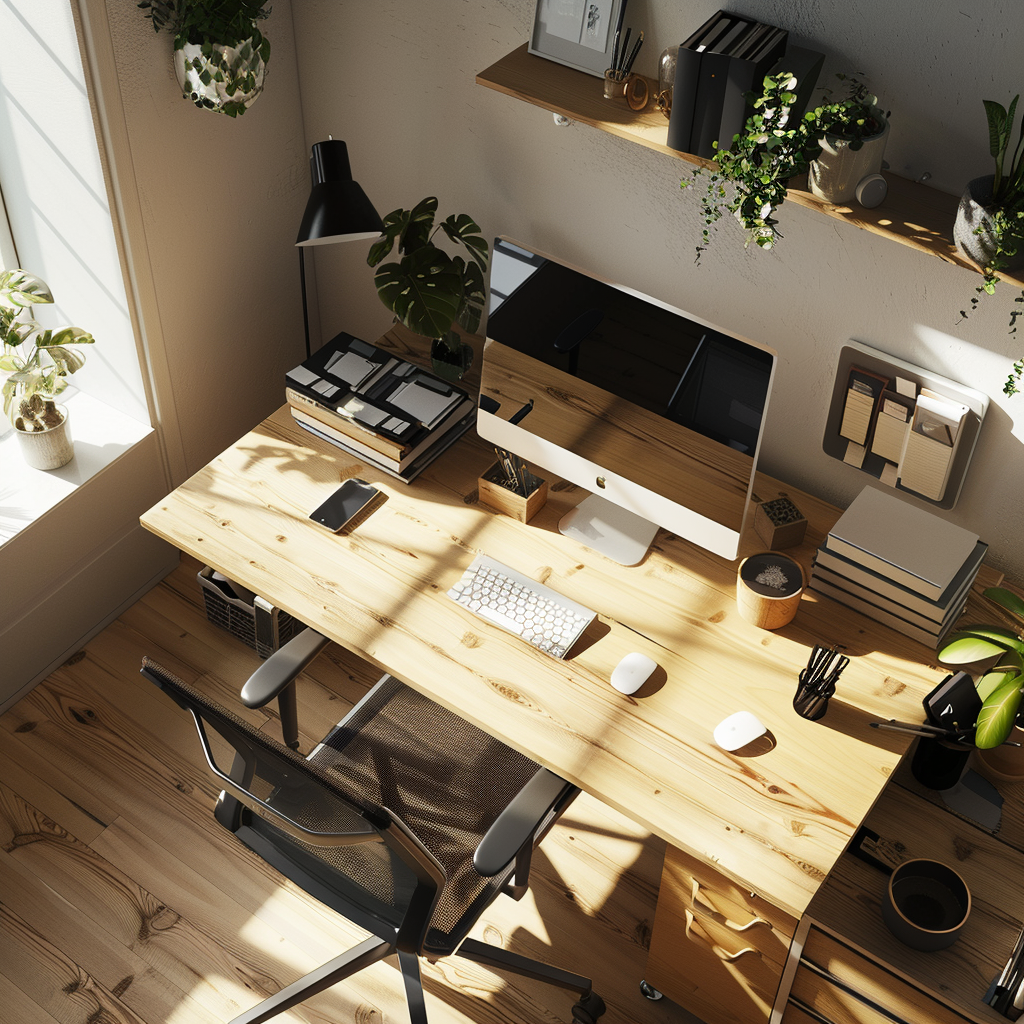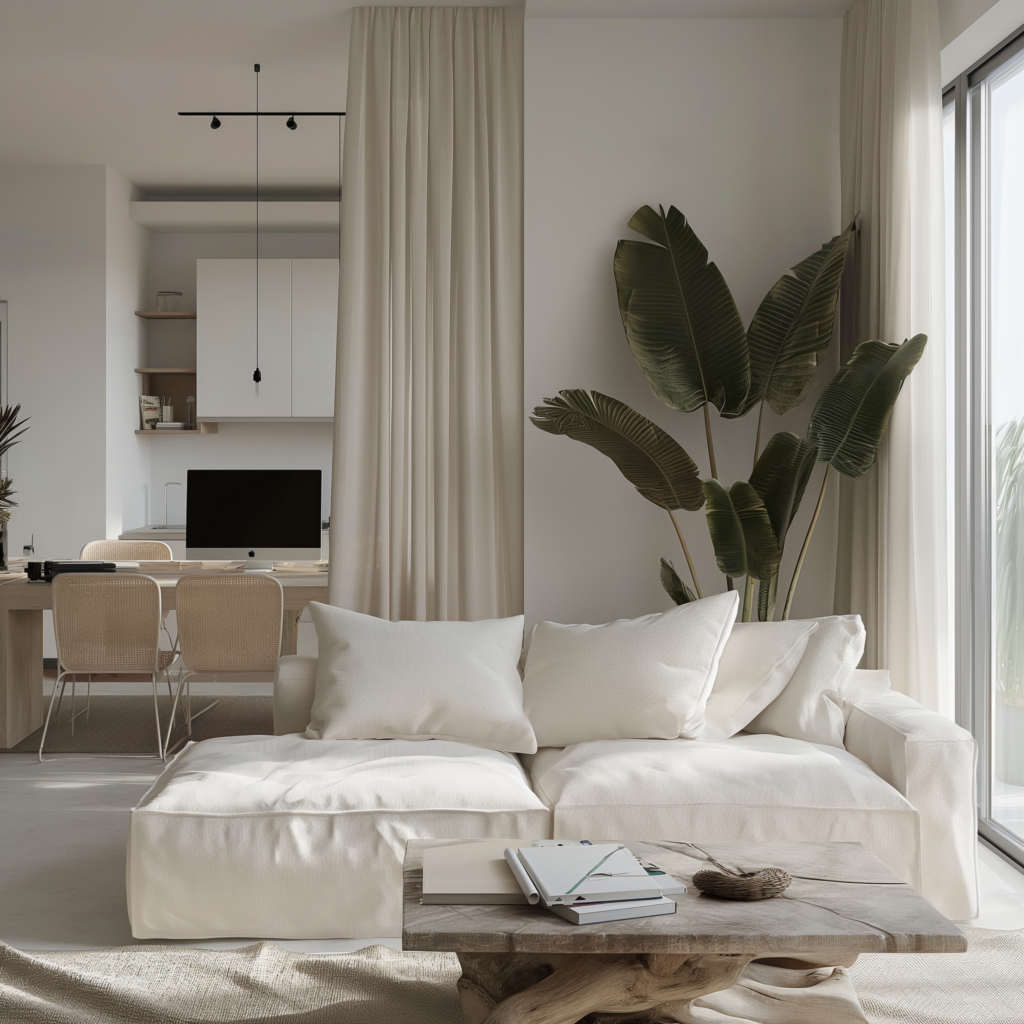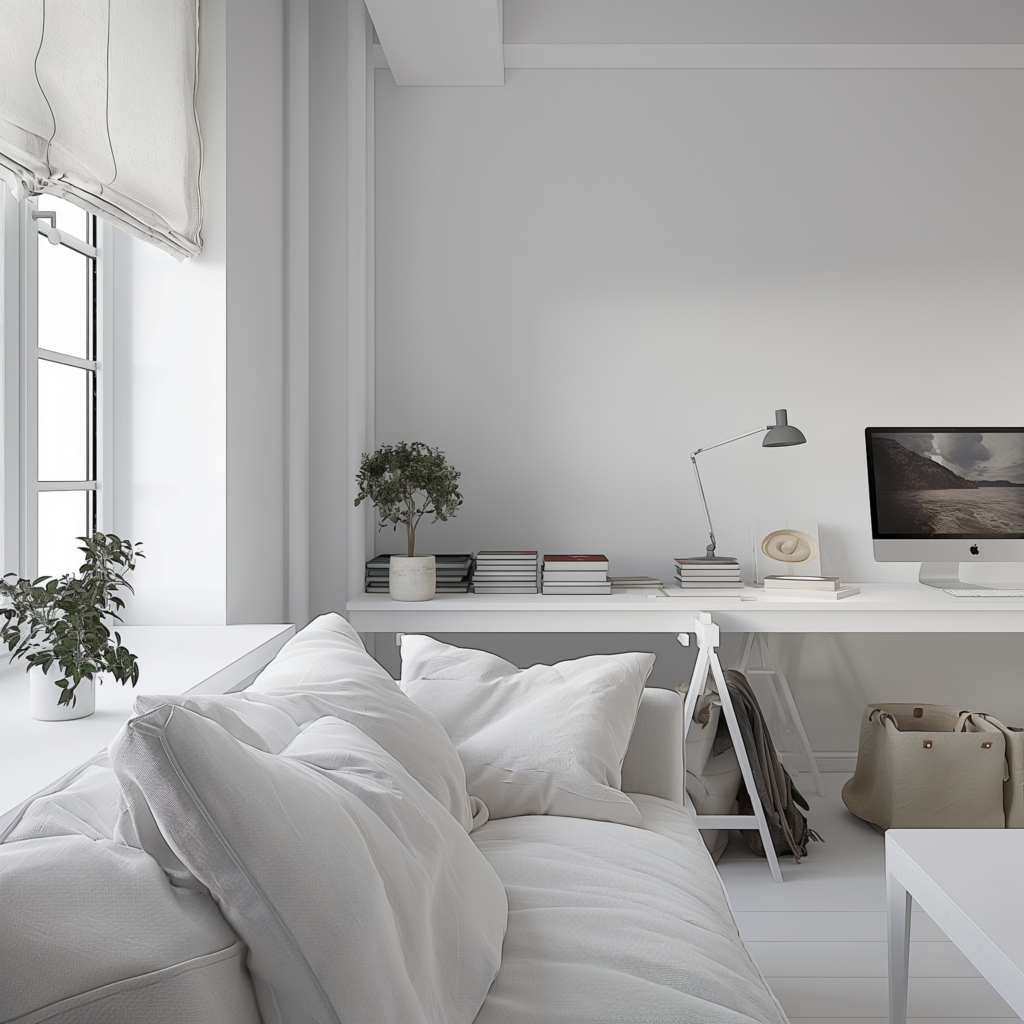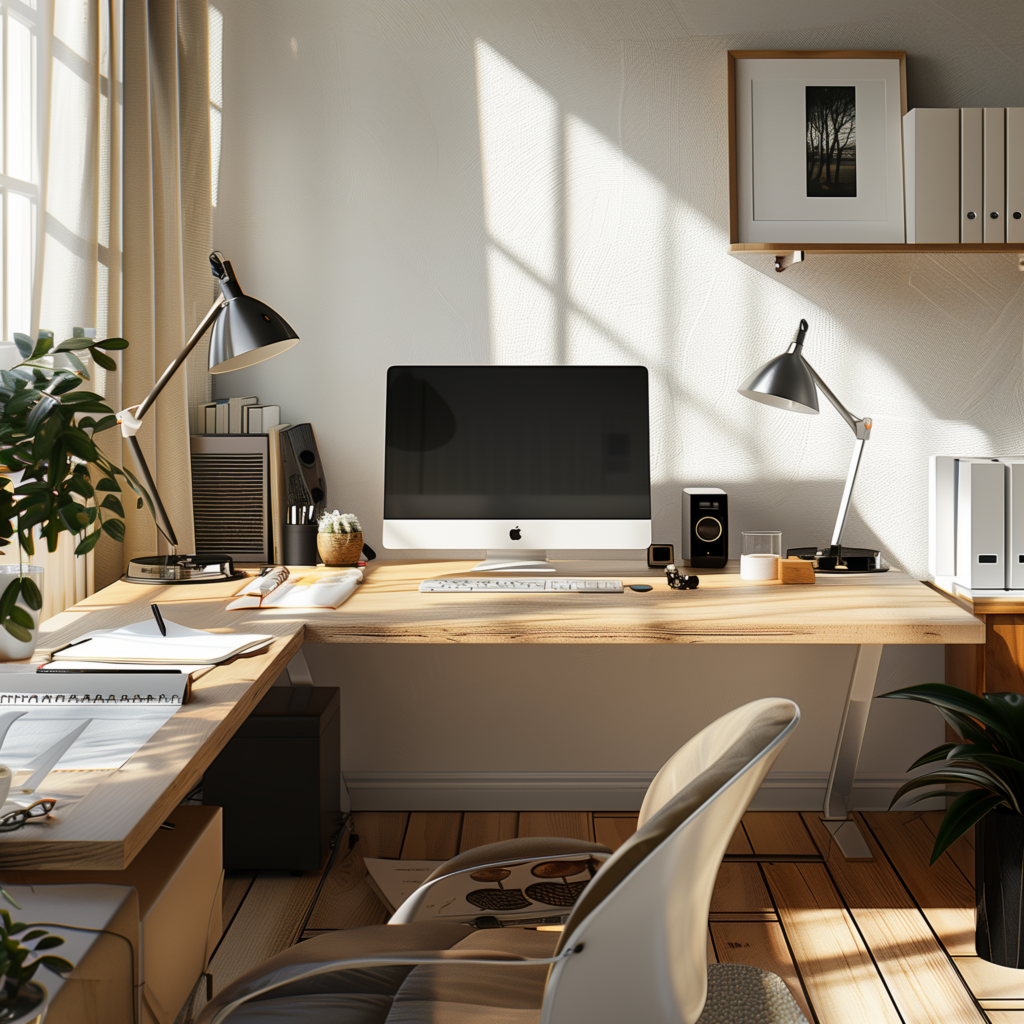Productive Serenity: Designing a Japandi Workspace for Focus
Working remotely or from the comforts of your own home is now a trend. It has become an option for a lot of workers, especially when the pandemic hit the world. The problem is that blurring the line between working and resting has now become more challenging.
If you are working from home, you need to create a designated workspace that will surely boost your productivity while solidifying an appropriate routine that helps draw the line while you are in your space. One way to enhance your focus and productivity is to design a Japandi workspace and you will learn about that through this article.
What Makes a Japandi Workspace Beneficial?
If you are still wondering how you can design your home office or workspace, you can always pick the Japandi style. It is specifically suitable for office and work environments because of several reasons – one of which is that it assures you of showcasing both functionality and simplicity.
You will also fall in love with the natural elements used in a Japandi workspace as it is guaranteed to create a relaxing and soothing atmosphere. It helps you build a harmonious and relaxing environment, which creates positive vibes and balance. Moreover, the style used in Japandi is sustainable, meaning it’s good for the environment, too.
Another benefit of applying the Japandi style in your workspace is that it is highly flexible. It promotes an adaptable and versatile interior decoration. One more thing that it can do is that it can create wellness in your workspace. It can enhance your focus and concentration, boost your productivity, and make you have a relaxing environment that’s definitely good for your mental health.
How to Design your Japandi Workspace?
For you to begin enjoying all the benefits that the Japandi design can give to your workspace or your home office, here are some interior decoration ideas you ought to try. All these tips and ideas can help improve and sustain your focus and productivity even for long periods.
Invest in natural materials
Aside from being aesthetically pleasing, using natural materials is important in a Japandi workspace as it is the core principle of this design. It is the philosophy followed by both Scandinavian and Japanese designs.
The Japanese deeply revere nature, which manifests in the way they utilize natural materials, such as bamboo, stone, rice paper, and wood in their interior decorations. They do this to establish a deep and strong connection to all things natural. Scandinavians also put more emphasis on utilizing natural materials. The reason behind this is that it reflects the geographical environment of the region, which is full of natural resources, even forests.
Since you will be designing your workspace, natural materials can be a big advantage. The reason is that they play a major role in establishing a calming and serene environment for you, which is good for your productivity and focus.
To stick to natural elements and materials, choose sustainable flooring, furniture, and other interior decoration items. For your furniture items, here are some ideas:
- Go for sustainably sourced wood – Your chosen furniture item should be made using FSC-certified wood. This assures you of the responsible sourcing of timber without leading to deforestation.
- Check for durability and quality – These furniture items may be costlier but they are worth the investment as they last longer. They also need less frequent replacements. This is good for the environment, too, as it lessens waste.
- Choose recycled ones – As much as possible, pick furniture items based on reclaimed or recycled materials. They can lessen waste and the consumption of resources.
- Offer support to artisans in your locality – Aside from helping the economy in your locality, supporting local artisans can also lessen the carbon footprint brought on by having to ship furniture items from other countries and places.
It is also crucial to be selective in terms of the materials for your flooring. One great option is bamboo, which has faster growth compared to hardwood. This makes it more renewable compared to the others. Another option for flooring is cork, which is not only durable but also biodegradable. It naturally regrows, which is why it is also a renewable material. There are also recycled materials that you can use as flooring materials, like recycled rubber or wood.
You can also choose carpets created using natural fibers. Some examples are sisal, jute, and wool – all of which are biodegradable. You also have an assurance that these materials have less environmental impact compared to carpets constructed out of synthetic material

Stick with the minimalist design
Note that interior decorations of Japan and Scandinavia adhere to a minimalist approach, which means that their spaces are usually free of clutter and mainly open. You have to let go of anything excessive as it may only complicate the design and your overall life. You should, therefore, focus on choosing functional and simple objects.
When designing your workspace the minimalist way, you have to make sure that you utilize every available space. By doing that, you can lessen the possibility of using excessive furniture items. It also assures you that the environment will be free of clutter and is generally clean.
Invest only in high-quality items, so there is no need for you to buy a lot. This allows you to adhere to minimalism while sticking to long-lasting products, lowering the risk of building up waste and requiring frequent replacements.
As much as possible, choose multipurpose furniture items. This can help maximize your workspace and boost its functionality as you also try to retain a minimalist and clean aesthetic. Pick furniture items that have additional cupboards and drawers, too. Moreover, ensure that your desk remains free of clutter.
Integrate functional elements that boost productivity
Among the elements that can make your Japandi workspace productive and enhance your focus are the following:
- Eco-friendly paints – Go for paints that have either no or low VOCs (volatile organic compounds). They are more effective in boosting the air quality indoors and improving the environment.
- Energy-efficient lighting – Ensure that you choose LED lights, too. They are better than the usual light bulbs because of their higher energy efficiency and longer lifespan.
- Indoor plants – Aside from boosting your workspace’s aesthetics, adding indoor plants into your workspace can improve the quality of air. They also let you connect with nature. Pick local plant species that do not require that much care and water.
- Japandi desk – Use a desk constructed from natural materials, like veneer wood and solid wood. Utilize the appropriate colors resonating with the Japandi theme, too. A couple of examples are black and white. You can also improve the desk’s functionality by ensuring that its standing and storage capabilities are excellent.
The good news is that even if your chosen desk is not constructed from natural materials, it is still possible for you to integrate natural accessories, so your space can build a connection with nature.
- Accessorize your desk – In relation to the use of the Japandi desk, ensure that you accessorize it appropriately. The desk’s setup should have a Japandi vibe by using accessories constructed out of solid or wood veneer, like a laptop or monitor stand, light, phone charger, leather, and desk pad. Other accessories and elements, like notebook, wrist rest, and writing utensils should also be based on Japandi colors and made of natural materials.

Incorporate an earthy color palette into your Japandi workspace
Note that Japandi design always prefers natural things. This particular principle can also be extended to colors. Give your workspace or home office a more natural and soothing look by integrating earthy hues into it.
A few choices would be charcoal gray, terracotta, and wenge. You can also pick colors, such as deep maroon, honey yellow, bronze, and pale brown to ensure that your workspace will continue to appear glowing and warm.
You can also provide your interiors with earthy tones with the help of upholstery and textiles. It also helps to choose amber-colored or brown office chairs. If you want, you can give your workspace an accent chair with the color, burnt orange. One more thing that you can do to supply your workspace with warm and earthy tones is to incorporate porcelain and terracotta pots.
Utilize paper decorations
Note that Japanese makers and artisans utilize paper as part of their tradition when creating lightweight objects. As for the Japandi design, most use paper that is constructed out of a unique plant fiber. This paper is stronger than other materials, too.
What’s great about using objects based on Japandi paper is that they appear elegant while providing your workspace with an airy feel. As much as possible, invest in a paper table lamp with a modern design. You can also choose a set of pendants that you can use to brighten your workspace
The fact that your space stays bright also means that you will have a better focus as you stay and work in your space. Investing in a shoji paper screen divider is also practical as it can form a couple of spaces from just one. You can expect the screen to be of help in letting light come in or pass, which is also a good thing as it makes even a small workspace look and feel more open and larger.

Utilize bamboo shades and flowing curtains
You need window treatments for your home office or workspace as they can help beautify it and make it appear incredibly clean and fresh. Since you are designing your workspace the Japandi way, the trendiest pairing would be flowy and light curtains and bamboo shades.
There is no need to use a lot of fabrics. Use just the right amount so that you can let the light come through gracefully with a bit of wisp through your Japandi curtains. They should also give you adequate privacy, thanks to the bamboo shades’ natural textures.
It also helps to combine natural elements and neutral tones. That way, there will be a soothing and relaxing ambiance capable of lowering your stress level plus it can promote better mental health and well-being.
Conclusion
Overall, your focus when creating a Japandi workspace or office is to make it appear calm. You can provide your workspace with a sense of being tranquil and peaceful with the help of natural materials, such as wood, as well as an earthy color palette. Aside from being pleasing and attractive to the eye, it also gives you a sense of serenity and balance, which is a big advantage, especially if you are dealing with big stuff during your busy work schedule.
Make your Japandi workspace as soothing and calming as possible, so your mood will improve while you get to reduce your stress level. This can lead to a healthy work-life balance.
